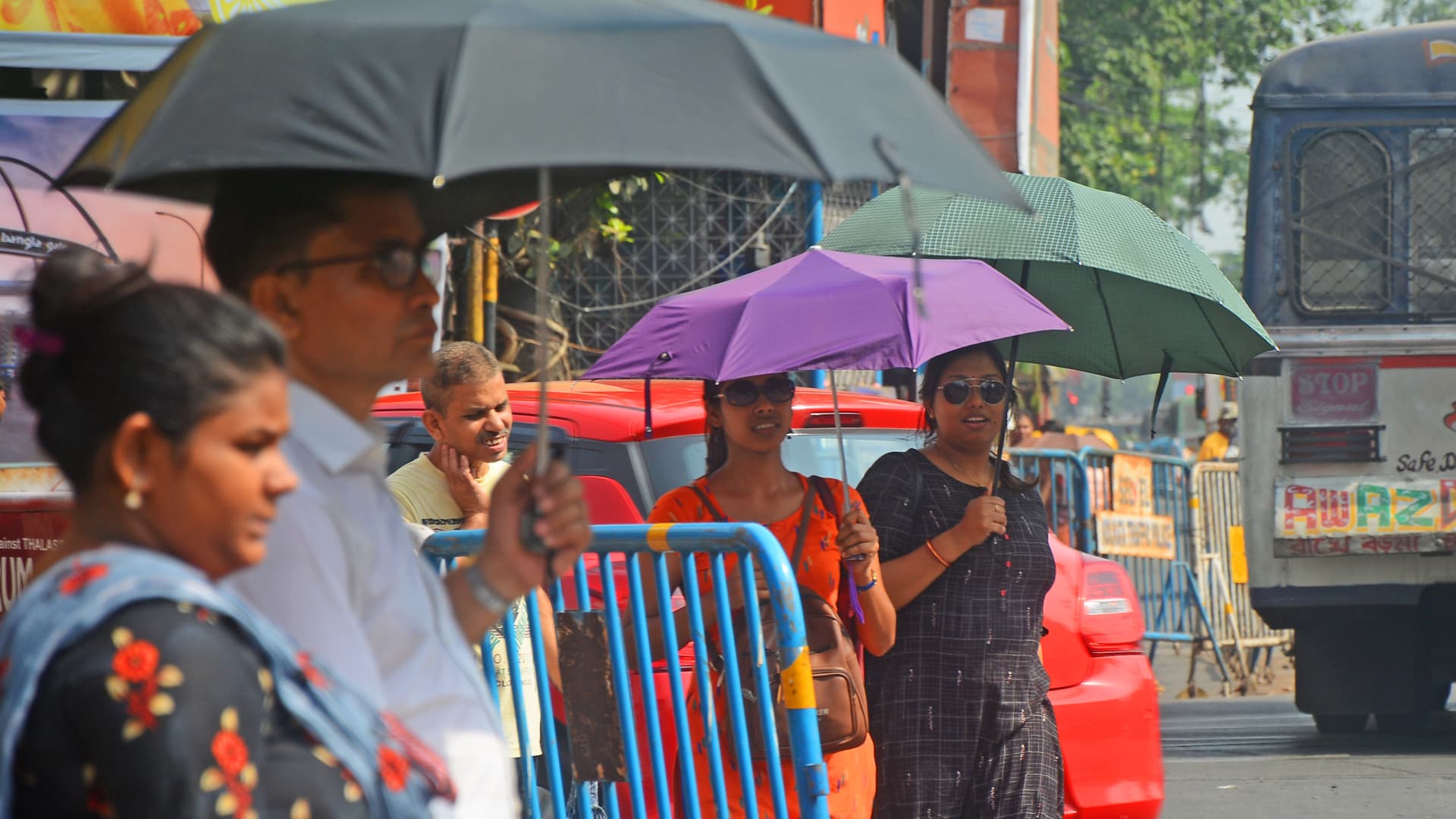Products You May Like
India has been suffering under record-breaking heat for the last couple months.
Last month was the third-hottest April the country has seen over the past 122 years, from 1901 to 2022, according to government officials.
The average maximum temperature was 35.30 degrees Celsius (95.5 degrees Fahrenheit), coming in just behind 35.42 degrees Celsius (95.8 degrees Fahrenheit) in 2010 and 35.32 degrees Celsius (95.6 degrees Fahrenheit) in 2016, the Indian government said in a statement on Monday. That’s more than a degree hotter than the average max temperature in April between the years 1981 and 2010, which was 33.94 degrees Celsius (93.1 degrees Fahrenheit).
The average maximum temperature recorded in March was 33.10 degrees Celsius (91.6 degrees Fahrenheit), which is the highest average maximum in the past 122 years, and just a smidge higher than the previous record high recorded in March 2010. It’s almost two degrees hotter than average maximum temperature in March between the years 1981 and 2010, which was 31.24 degrees Celsius (88.2 degrees Fahrenheit).
What’s particularly notable is the early onset of the heat wave, according to Arpita Mondal, a professor of climate studies at the Indian Institute of Technology. The expected timing of a heat wave like this is May and June, Modal told CNBC. It’s also affecting a notably large geographic region, Mondal said.
Human-caused climate change is likely to make heat waves hotter, longer, and more common, according to the National Academies of Sciences, Engineering, and Medicine.
“The scientific community has overwhelming evidence that climate change is causing the distributions of temperature to shift by changing the ‘normal’ state, and shift in distributions would mean more and more chances of extremes,” Mondal told CNBC.
That said, it’s too early to tell if the March and April heat wave in India is a single event or a harbinger of a more extreme heat events, Mondal said. Heat waves are often a response to multiple specific factors, including ocean events in the Pacific and Atlantic, and local weather patterns resulting from dry soil because of limited rainfall.
Northwest and Central India are due for thunderstorms which should being some relief from the record-setting heat wave that has been blanketing much of the country in recent months. Temperatures are expected to drop by several degrees.
Other regions aren’t expected to see much relief in the short term. Gujarat and Maharashtra, in the western part of the country, are expected to have “no significant change” in their maximum temperatures over the next two days and then see their maximum temperatures go up by about 2 degrees Celsius (3.6 degrees Fahrenheit), the Indian meteorological department said on Monday.
To deal with the heat, the Indian meteorological society advised people to avoid direct heat exposure and to stay hydrated. “Drink sufficient water — even if not thirsty,” a written statement from the organization published on Sunday recommended.
“Wear lightweight, light-colored, loose, cotton clothes and cover the head by use of cloth, hat or umbrella,” the Indian government recommended.
Much of India is expected to continue to suffer under high temperatures in May, the government’s meteorological department said. “Above normal minimum temperatures are likely over most parts of northwest, central, east and northeast India,” the monthly forward-looking outlook, which was published on Saturday, says.
